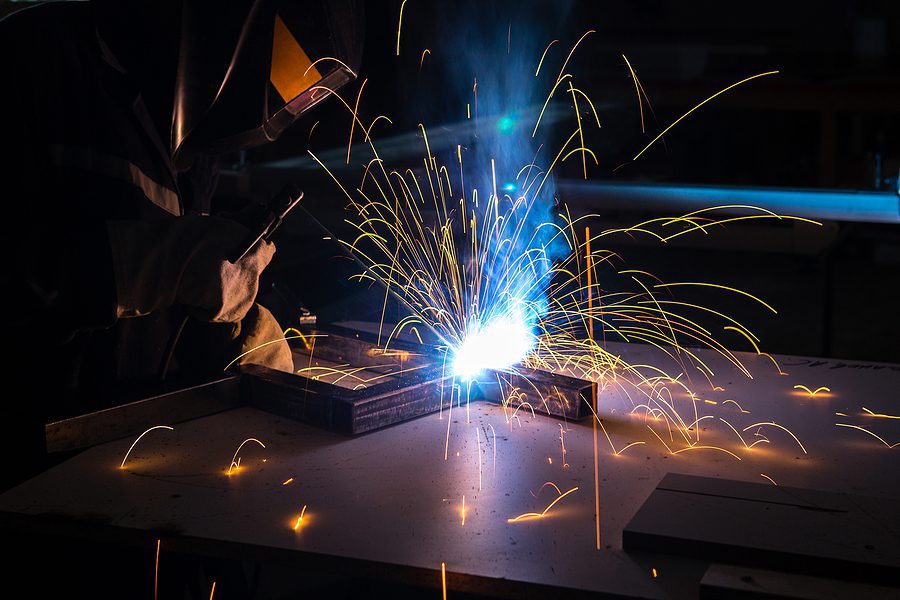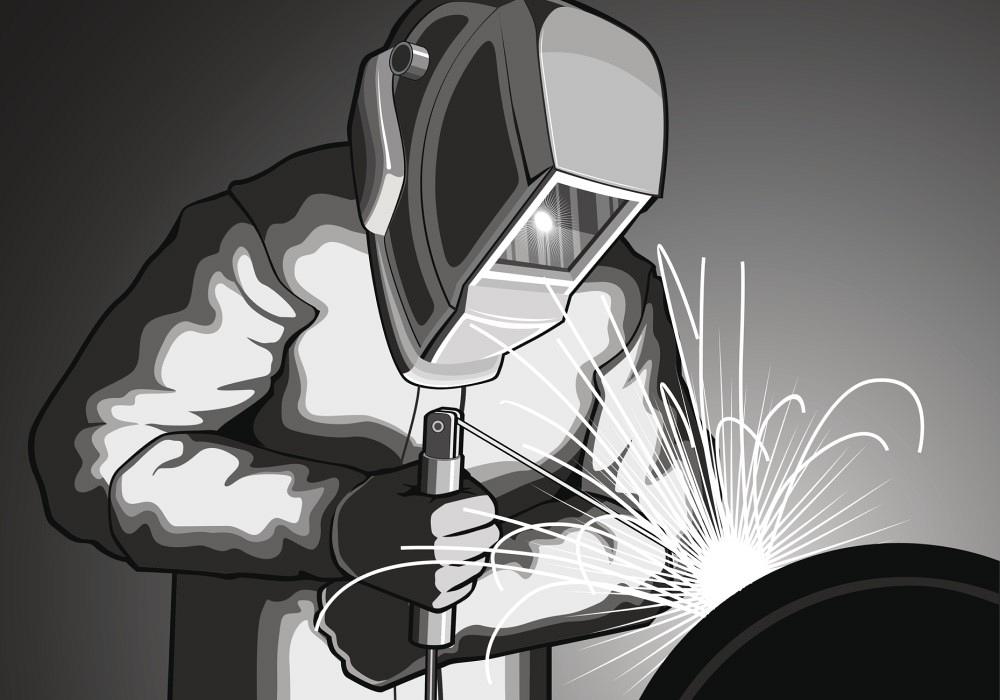Common Welding Repair Work Issues and Just How to Address Them Properly
Welding fixings often experience a variety of issues that can threaten the honesty of the end product. Common issues include poor penetration, porosity, and imbalance, to name a few. Each issue offers distinct challenges that call for particular strategies for resolution. Understanding these concerns is essential for welders aiming to boost their results and abilities. This discussion will certainly discover these typical welding repair work problems and reliable techniques to resolve them.
Poor Infiltration
Inadequate infiltration takes place when the weld metal stops working to completely fuse with the base material, leading to weak joints and prospective architectural failings. This concern frequently originates from inadequate warmth input, inaccurate electrode angle, or improper welding rate. Welders might encounter insufficient penetration because of a miscalculation of the essential specifications for a particular product thickness or type. In addition, contamination on the base product's surface can prevent reliable bonding, worsening the trouble. To attend to insufficient penetration, welders must assure suitable settings on their devices and keep a tidy job surface. Routine inspection of welds is advised to identify any kind of shortages early, permitting timely modifications and the prevention of jeopardized structural honesty in welded assemblies.
Porosity
Porosity is a typical flaw in welded joints that shows up as small gas bubbles entraped within the weld steel. This problem can compromise the honesty of the weld, bring about decreased toughness and possible failure under stress and anxiety. Montana Mobile Welding and Repair Welding. Porosity normally arises from contamination, moisture, or incorrect welding methods, which permit gases to run away right into the liquified weld swimming pool. To address porosity, welders should guarantee correct surface area preparation, preserve a tidy workplace, and use appropriate welding specifications. In addition, selecting the appropriate filler product and shielding gas can minimize gas entrapment. Regular evaluation and testing of welds can aid identify porosity early, assuring prompt corrective actions are taken, consequently protecting the high quality and reliability of the welded framework
Imbalance
Misalignment in welding can emerge from different variables, consisting of incorrect arrangement and thermal growth. Comprehending the origin is necessary for effective resolution. A number of improvement strategies are readily available to realign elements and ensure architectural integrity.
Reasons for Imbalance
Welding misalignment commonly originates from a selection of underlying problems that can jeopardize structural integrity. One key cause is incorrect fit-up of parts before welding, which can result in voids and unequal surface areas. Variants in thermal development during the welding procedure can likewise lead to distortion, especially if the materials being joined have different coefficients of growth. In addition, insufficient clamping and fixturing may fail to hold parts safely in position, causing movement throughout welding. Improperly maintained equipment, including welding makers and devices, may introduce inconsistencies in the weld bead, further adding to imbalance. Driver mistake, stemming from inadequate training or experience, can additionally play a considerable role in producing misaligned welds.

Modification Techniques Readily Available
Addressing imbalance properly calls for a mix of restorative strategies tailored to the particular concerns available. One common technique is the use of jigs or fixtures to hold parts in the appropriate placement during welding, guaranteeing regular placement. Additionally, pre-heating the products can help in reducing distortion and enhance fit-up. For significant misalignment, mechanical adjustment strategies, such as utilizing hydraulic jacks or clamps, can be utilized to remedy the placement before welding. Post-weld warmth treatment may additionally be necessary to alleviate tensions brought on by imbalance. Finally, mindful assessment and change during the setup stage can stop imbalance concerns from becoming considerable problems, promoting a smoother welding procedure and improving overall architectural stability.
Distortion
Distortion is a common obstacle in welding that can arise from various aspects, consisting of uneven heating & cooling. Comprehending the sources of distortion is necessary for implementing efficient prevention strategies. Resolving this problem not just enhances structural integrity yet also boosts the overall high quality of the weld.
Reasons for Distortion
When subjected to the extreme warm of welding, materials commonly undergo changes that can result in distortion. This phenomenon mainly occurs from thermal expansion and contraction during the welding procedure. As the weld area warms up, the material increases; upon cooling, it gets, which can create inner stresses. Additionally, unequal home heating throughout a work surface can worsen these tensions, resulting in warping or flexing. The kind of product additionally plays a significant duty; metals with varying thermal conductivity and coefficients of expansion might respond differently, causing unpredictable distortions. Poor joint design and insufficient fixturing can contribute to imbalance during welding, increasing the probability of distortion. Understanding these causes is crucial for reliable welding repair service and prevention approaches.
Prevention Techniques
Efficient prevention methods for distortion during welding emphasis on managing warm input and guaranteeing proper joint layout. Maintaining a consistent warm input assists to minimize thermal development and tightening, which can bring about distortion. Making use of methods such as pre-heating the work surface can likewise reduce the temperature level gradient, advertising uniform home heating. Additionally, picking appropriate joint layouts, such as T-joints or lap joints, can boost security and decrease tension focus. Executing proper fixturing to safeguard the work surfaces in location better aids in keeping placement throughout the welding procedure. Lastly, staggered welding series can distribute warm a lot more equally, avoiding local distortion. By using these methods, welders can greatly decrease the likelihood of distortion and enhance the total quality of their welds.
Fracturing
Cracking is a typical issue experienced in welding repairs, often resulting from various factors such as improper cooling rates, product choice, or inadequate joint prep work. The incident of cracks can substantially compromise the honesty of the weld, leading to possible failings during procedure. To address this issue, welders should first assess the origin, making certain that products work and properly chosen for the particular application. Furthermore, controlling the cooling rate throughout the welding process is essential; quick air conditioning can induce anxiety and bring about splitting. Appropriate joint design and prep work likewise add to lessening the threat. Implementing these methods can enhance weld quality a fantastic read and durability, inevitably minimizing the likelihood of breaking in completed weldments.

Insufficient Combination
A substantial problem in welding repair services is insufficient blend, which happens when the weld metal does not properly bond with the base material or previous weld passes - Montana Mobile Welding and Repair Belgrade Welding. This problem can lead to weak points in the joint, possibly compromising the honesty of the bonded framework. Factors adding to insufficient fusion include inadequate heat input, inappropriate welding method, and contamination of the surface areas being signed up with. To resolve this concern effectively, welders ought to assure proper pre-weld cleaning and surface area preparation, in addition to change their welding specifications to attain appropriate penetration and combination. Routine examination during the welding process can likewise assist determine incomplete combination early, enabling prompt corrective steps to enhance the overall quality of the weld
Overheating
While welding fixings can boost architectural stability, overheating presents a significant challenge that can bring about material deterioration. Excessive heat throughout welding can modify the mechanical residential or commercial properties of steels, resulting in reduced strength, raised brittleness, and bending. This phenomenon is particularly crucial in high-stress applications where architectural integrity is extremely important. Identifying overheating can involve visual evaluations for staining or distortion, as well as keeping track of temperature level throughout the welding procedure. To mitigate the risks linked with getting too hot, welders need to use ideal techniques, such as managing heat input, adjusting travel rate, and making use of appropriate filler products. In addition, carrying out pre- and post-weld heat therapies can help bring back material homes and improve the general top quality of the repair service, ensuring lasting performance and security.
Often Asked Questions
What Are the Typical Indicators of a Welding Flaw?

Just How Can I Evaluate My Welds for Quality?
To examine welds for top quality, one can make use of aesthetic examinations, ultrasonic testing, and radiographic methods. Each method guarantees architectural integrity, identifies defects, and verifies adherence to specified requirements, eventually improving the integrity of the bonded joints.
What Safety and security Precautions Should I Take While Welding?
When welding, one ought to prioritize security by putting on appropriate individual protective devices, making sure proper ventilation, securing combustible materials away, preserving a tidy workspace, and being mindful of surroundings to avoid accidents and injuries.
Can I Fix a Weld Without Remodeling the Entire Joint?
Repairing a weld without renovating the whole joint is feasible, depending on the damages (Montana Mobile Welding and Repair). Methods such as grinding, adding filler product, or utilizing a welding procedure can properly attend to particular imperfections while preserving the bordering structure
What Tools Are Essential for Reliable Welding Repair Works?
Necessary devices for reliable welding fixings include a welding machine, cable brush, grinder, protective gear, clamps, and filler materials. Each tool plays an essential role in making certain high quality and safety during the repair procedure. Porosity typically arises from contamination, dampness, or improper welding methods, which allow gases to get away right into the molten weld swimming pool. Badly maintained devices, including welding equipments and tools, may introduce inconsistencies in the weld bead, further contributing to imbalance. When subjected official statement to the intense warm of welding, products frequently Get More Info undertake changes that can lead to distortion. Fracturing is an usual problem run into in welding repair work, typically resulting from different variables such as improper air conditioning prices, material choice, or poor joint preparation. A substantial issue in welding fixings is incomplete blend, which takes place when the weld steel does not effectively bond with the base material or previous weld passes.